- News
- Reviews
- Bikes
- Components
- Bar tape & grips
- Bottom brackets
- Brake & gear cables
- Brake & STI levers
- Brake pads & spares
- Brakes
- Cassettes & freewheels
- Chains
- Chainsets & chainrings
- Derailleurs - front
- Derailleurs - rear
- Forks
- Gear levers & shifters
- Groupsets
- Handlebars & extensions
- Headsets
- Hubs
- Inner tubes
- Pedals
- Quick releases & skewers
- Saddles
- Seatposts
- Stems
- Wheels
- Tyres
- Tubeless valves
- Accessories
- Accessories - misc
- Computer mounts
- Bags
- Bar ends
- Bike bags & cases
- Bottle cages
- Bottles
- Cameras
- Car racks
- Child seats
- Computers
- Glasses
- GPS units
- Helmets
- Lights - front
- Lights - rear
- Lights - sets
- Locks
- Mirrors
- Mudguards
- Racks
- Pumps & CO2 inflators
- Puncture kits
- Reflectives
- Smart watches
- Stands and racks
- Trailers
- Clothing
- Health, fitness and nutrition
- Tools and workshop
- Miscellaneous
- Buyers Guides
- Features
- Forum
- Recommends
- Podcast
feature
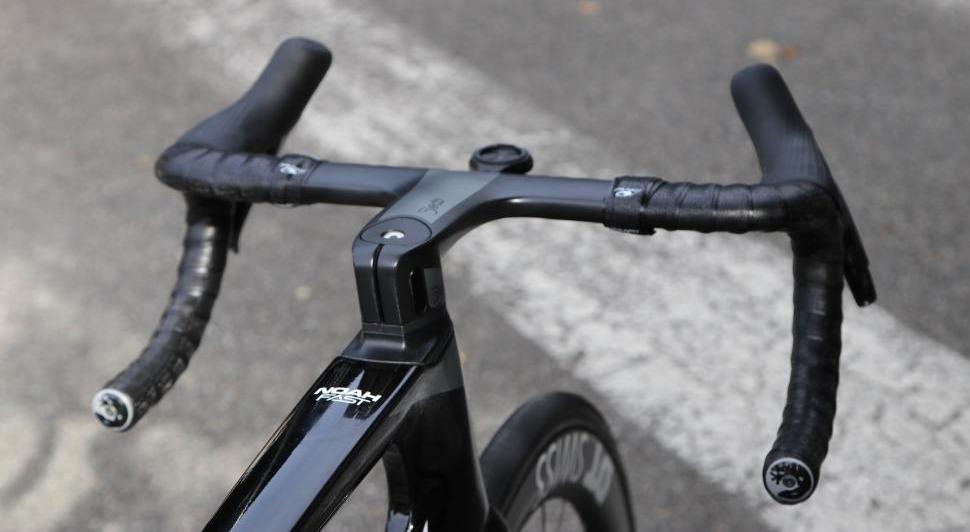 2022-dauphine-ridley-steff-cras levers bars
2022-dauphine-ridley-steff-cras levers bars Tech trends: Narrow bars with shifters angled inwards – should you be copying the pros to ride faster?
Thanks to spending a huge number of hours on the bike each week, riders in the pro peloton can pull off some pretty extreme positions that, of course, we mere mortals love to copy. The latest 'in thing' appears to be using tiny bars and angling the shifters inwards, but why? And should we be setting up our bikes the same?
Whilst keenly watching the spring races and now the Tour de France, the road.cc tech team in an effort to find any inspiration that might make us quicker (aside from serious training) has noticed that more and more riders are choosing to use narrow bars and get their shifter hoods even narrower still. This seems to be a trend, especially with the younger riders in the peloton, and something that is being replicated on the local, regional and national racing scene.
Just last month at the British National Criterium Championships, Harry Tanfield was sporting these rather extreme bars on his Ribble Ultra road bike. Go to any criterium up and down the country and it's likely you'll spot similar, albeit maybe not to such extreme levels.
> Ribble launches super aero 'Ultra' road bike
The Benefits
The advantage of going to a narrower bar is of course aerodynamics – not from the bar itself but from the narrower frontal area it gives the rider.
Wind tunnel data is hard to come by but some quick maths using the known Cda (coefficient of aerodynamic drag) of a cylinder (standard round profile bar) indicates that the bars themselves contribute about 0.9 watts of additional drag for each 2cm gained when travelling at 40km/h. In other words, it's negligible.
For the rider, though, it makes a much larger difference. That's why we see time trialists using aero bars. Most sources indicate that for every 2cm closer together you bring your hands there's a 25w advantage when travelling at 40km/h.
Now, the reliability of any data should be taken with a pinch of salt but let's play devil's advocate and say in real-world terms the advantage is only half that. That's still a very real gain and by no means marginal.
> Best road bike handlebars 2022 — fine-tune your ride position for comfort and performance
There's also the fact that in a road race narrower bars can squeeze through tighter gaps and in the hustle and bustle of racing that is very useful. It's likely for this reason you'll find many sprinters in the Tour using narrow bars (38cm).
The Negatives
So why don't people go really narrow? Well if Dan Bigham got his way then everyone might. However, narrower bars do close up your lungs. On a flat time trial, the aerodynamic benefits far outweigh this but as you slow down when you hit a climb (I've heard there are quite a few in the Tour de France) riders suddenly need all the oxygen they can get into their lungs so a balance has to be met.
The other disadvantage of narrow bars is reduced control. The steering will feel twitchier and more input from the rider will be required in crosswinds as the moment arm is shorter.
Very early road bike bars were quite wide and then got narrower and narrower until the 70s when skinny tyres meant that wider bars were necessary again. These days most bikes ship with 42cm or 44cm bars, depending on intended use and size.
Who's using what?
In the men's peloton, you'll find that 40cm bars are predominant, with plenty of 38cm bars on show too. That's much narrower than bikes off the shelf usually come with. A big part of that is down to performance. We've already discussed that narrower is often faster and the pros have plenty of time on the bike to train themselves into more extreme positions than most of us would ever find comfortable.
Another reason why the pros like using narrow bars is that many of them ride, or have ridden, on the track. Track bars always tend to be much narrower. Most track-specific bars start at 36cm from centre to centre.
Should you be copying the pros?
For the vast majority of the time, the bike industry does know what it's doing and the wider bars that come fitted to bikes will indeed provide more comfort. This is especially true if you ride with your arms straight. Forcing your hands inwards will simply put more strain on your shoulders and cause discomfort on longer rides.
Get a mate to take a video of you riding along (even better if you don't know it's happening). If your arms are almost locked then you should probably go for bars that are a similar width to your shoulder joints.
If, however, you're a keen racer or a smaller rider then yes, narrower bars have an advantage. For example, I have quite broad shoulders and after using many sizes find that a 40cm bar works best for me. If you bend your elbows then you can tend to get away with narrower bars as elbows articulate inward, not outward, for example when absorbing shocks.
Tilting shifters inwards
On Trek's recently released 2023 Madone, the rather cheeky aero claims were in large part based on the rider's position thanks to the shifters moving inwards when compared to the previous generation. According to Trek, on the same size bars, moving the shifters in 3cm accounts for 9.7 watts of the total 19w saving it claimed – so over half!
> Trek releases radical 2023 Madone SLR, its “fastest road race bike ever”
We spotted this rather extreme position on Steff Cras' bike. The inward-pointing shifters allow him to be as narrow as possible when cruising on the hoods without sacrificing leverage or stability when descending or battling for position on the drops.
> How Fast!? We take a look at Tom Pidcock's Alpe d'Huez conquering Strava file
To see where you should angle your shifters we recommend relaxing your arms and letting them hang by your sides. Then, without moving your wrists, rotate your arms so they're in front of you. Are your wrists pointing inwards or are they in line with your forearms? Everyone is different but for many people, there is a SLIGHT inwards angle. We recommend putting your shifters at the same angle. Letting your wrists sit in their neutral position is likely the most comfortable.
I think that a lot of the inward-pointing shifters at a local level are for pure aesthetics – a trend, if you like, that's especially popular with juniors. For a few people, it will be more comfortable and there are some aero benefits allowing a narrow position without sacrificing drop width.
However, the key to speed is sustainability; sustained power in a position that you can comfortably hold for the duration of your ride or race. If it's not more comfortable then it's not worth it, but you might want to look at the increasing number of flared bars which provide a similar effect.
Have you ever successfully copied a setup you've seen the pros using? And what size bars do you think are best for you? Let us know in the comments below...
Jamie has been riding bikes since a tender age but really caught the bug for racing and reviewing whilst studying towards a master's in Mechanical engineering at Swansea University. Having graduated, he decided he really quite liked working with bikes and is now a full-time addition to the road.cc team. When not writing about tech news or working on the Youtube channel, you can still find him racing local crits trying to cling on to his cat 2 licence...and missing every break going...
Latest Comments
- galibiervelo 2 sec ago
Bought this jacket in the Blue version a few months ago and love it. Warm with no overheating. I'm 34 waist and 42 chest and the XL is perfect. I...
- cyclefaster 12 min 33 sec ago
I'm not paying any more. Like I said many cycling fans are also sports fans who have a sports package with their TV. I had Eurosport for years,...
- ErnieC 4 hours 10 min ago
Good man, well done!
- David9694 10 hours 1 min ago
+1 on saddle height and also check your lateral alignment - everything should be straight and aligned. My bike fit years ago moved my feet to the...
- froze 10 hours 6 min ago
Everything Lezyne sells are really good, especially their pumps, and the Torque Drive. ...
- wtjs 10 hours 49 min ago
It's not only the UK which suffers from vile louts-VdP is a great athlete who deserves respect!
- Hirsute 11 hours 25 min ago
https://www.youtube.com/watch?v=wOzP87HVCWw
- Rendel Harris 12 hours 51 min ago
Apart from the fact that you're completely wrong - Decathlon is a French company and has 1045 stores in Europe compared to 50 in the UK - whilst...
- hawkinspeter 14 hours 57 min ago
Finally tried out the Smart Lever that I did get for Xmas as I had a suspicious looking bubble/bump on my rear GoodYear tyre (don't think I'll buy...
- pockstone 15 hours 23 min ago
Suitable reply, No Reply.



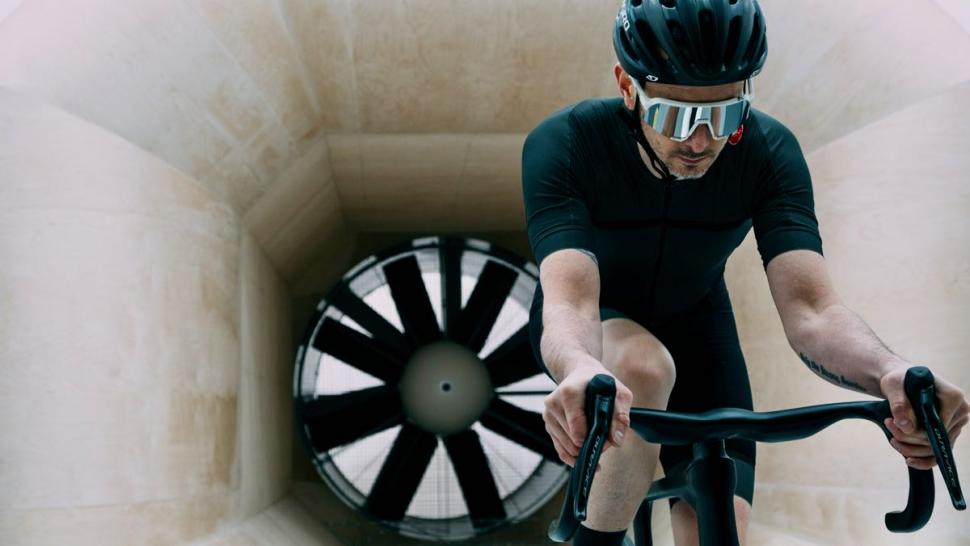
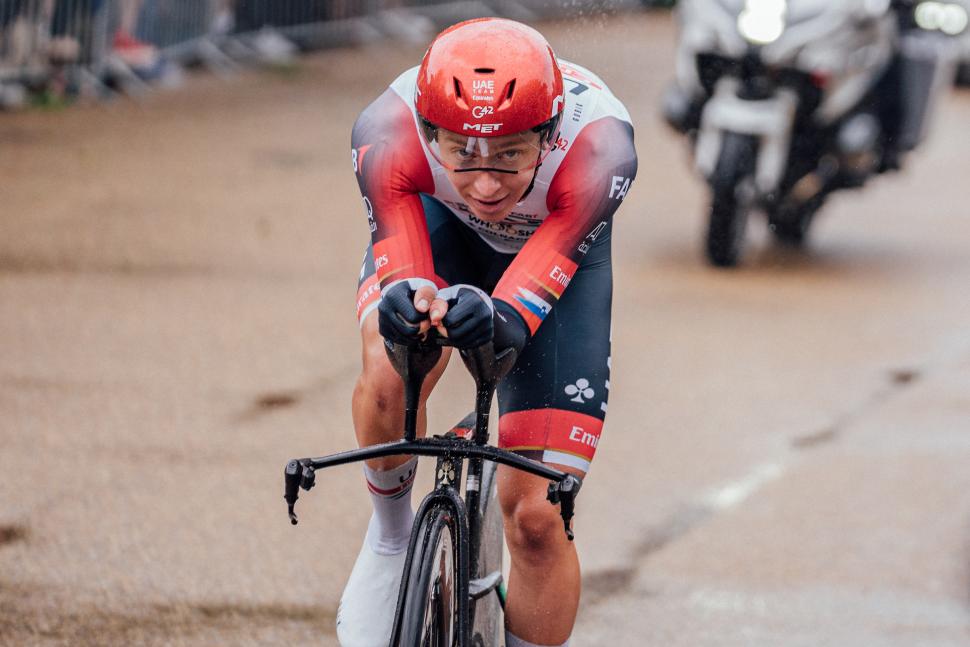
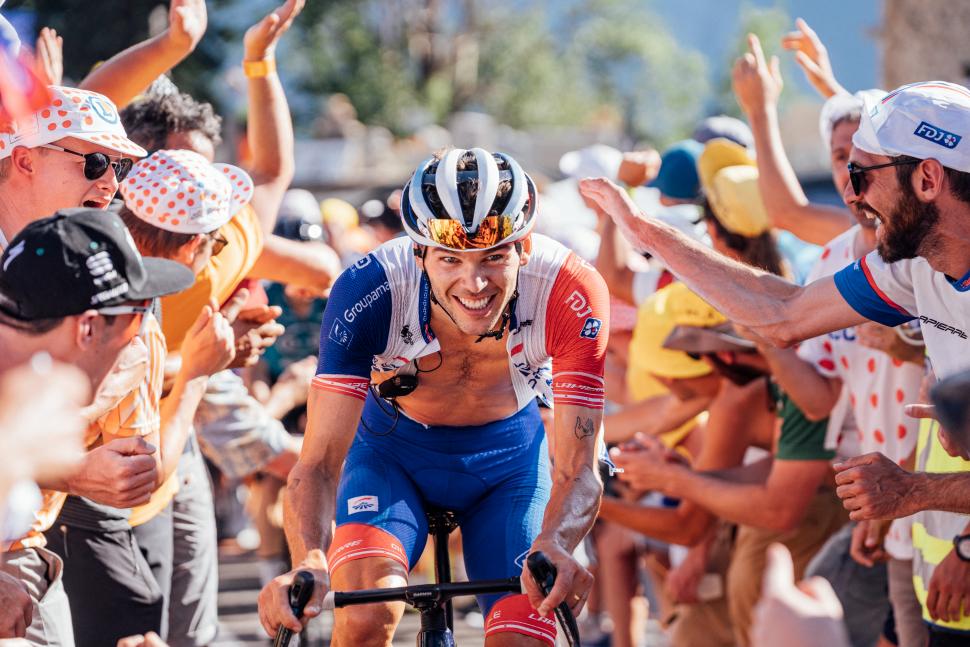

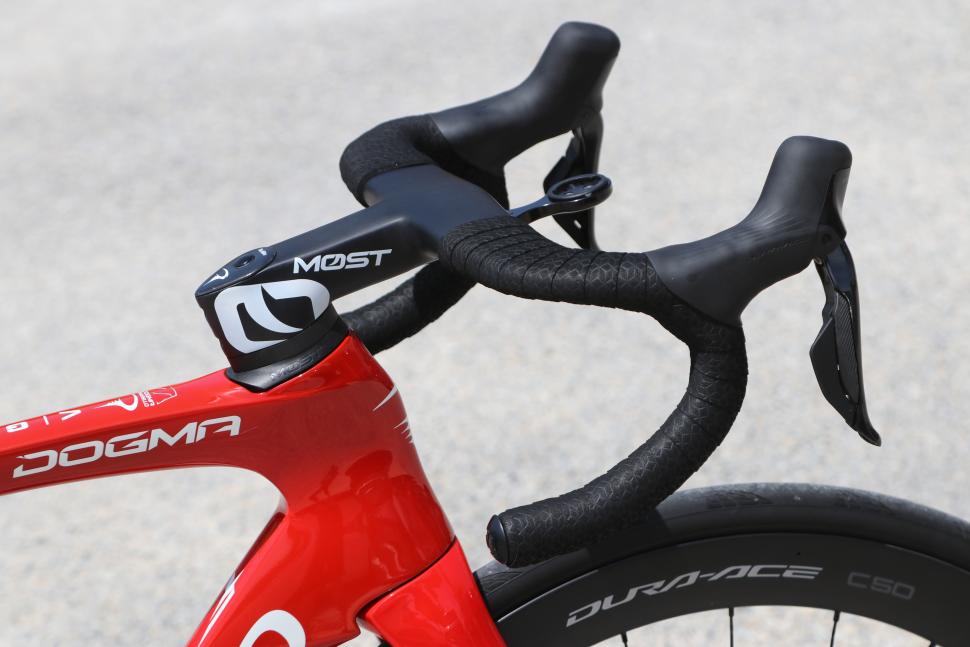
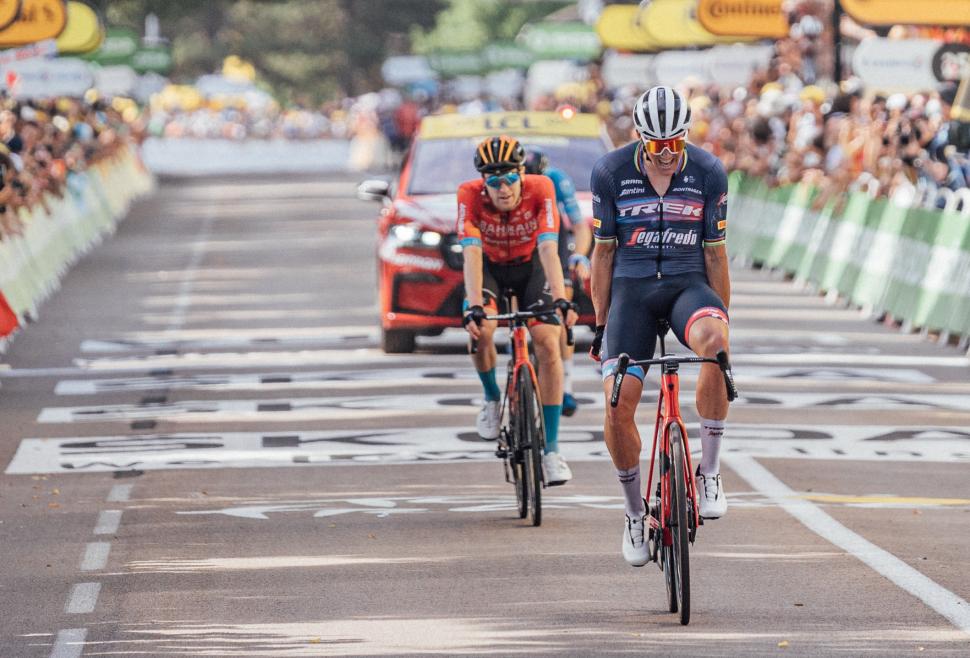
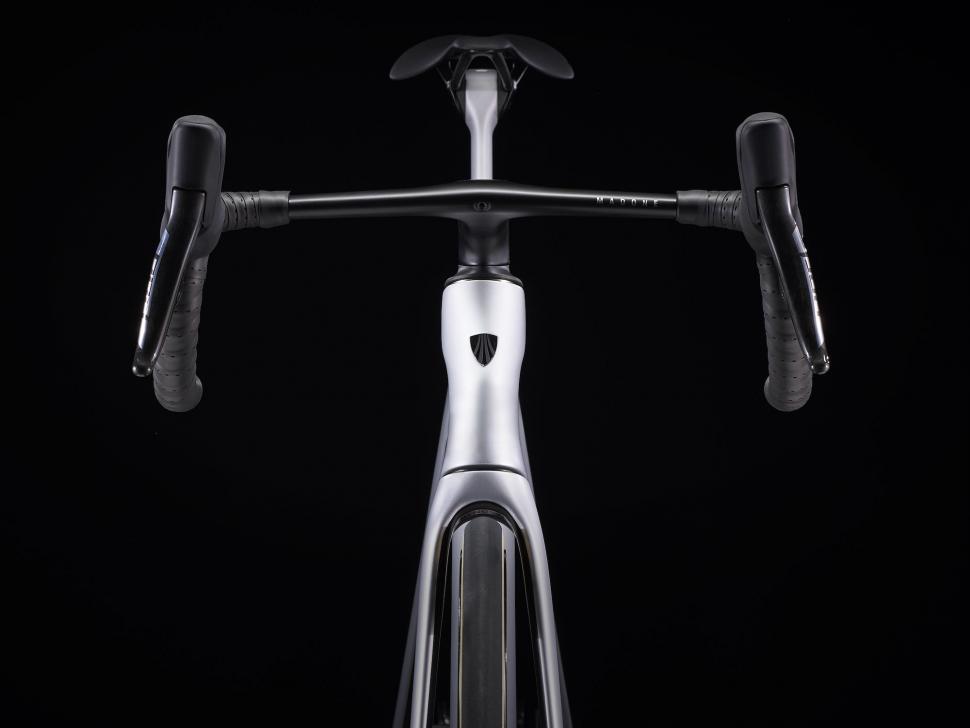

Add new comment
12 comments
I've been riding a gravel bar (12° flare) on a road bike which naturally tilts the shifters. It's way more confortable to hold the shifters that way. I usually ride a 38cm due to my should width but it's rather difficult to find a 38cm bar with 8-10° flare (this would be perfect for my taste).
Err, no
i think the comfort and saving of energy tends to be underplayed in these things, rather than the focus on going faster. We know that tradition has set many 'rules' that have been undermined by research - wider lower pressure tyres are a good example. Putting your arms and wrists in a more comfortable position will alllow you to ride further and the aero bonuses will help save energy so you have reserves later on. riders will always push extremes but the base principles at more reasonable levles make a lot of sense.
Just like climbing in the drops (I'm looking at you, Marco Pantani), and rolled up shorts (Voeckler) inward facing brakes should be banned for purely aesthetical reasons and anyone flouting this ban should be given 10 years hard labour.
I bought a 46cm bar, (£5 PX), for a gravel bike, but later changed it for a 36cm one I had lying around. and angled the hoods a little. Quite big change and both significantly faster (like over 1 km/h) and more comfortable but no real impact on handling. Of course being weak any gain, however marginal is noteworthy.
I lost a lot of interest at the claim of 25w saving for every 2cm of inward hand movement. At 40kph (for the sake of simplification that's about 300w of effort on the flat - give or take), moving your hands in 10cm (five per side), is very unlikely to save you 125w.
That level of difference would be so tangible that we'd all be doing it habitually by now. 175w is easy cruising, 300w is proper working.
I'd imagine the original claim will be based on bringing the whole arm inwards by 2cm, which is a hell of a lot harder to achieve (pesky shoulders) and a lot more limiting - you couldn't realistically bring your arms in by 10cm for instanc
Maybe the gains aren't linear. But. I do know from practical experience that bringing arms into the middle works significantly.
Years ago before I had a TT bike. I used my road bike with TT clip on bars. I was out with our clubs younger riders, struggling to hold onto the pack at the rear. I used the clip on position and was then able to back off my effort and still hold the pack. Not very safe overall but clearly demonstrated the benefits of being more aero😁
I angled my shifters inward last year as a free experiment (i.e., zero $$$) and found I love the new hand position which feels more comfortable on my wrists. What bothers me is that I've been a "roadie" for over 3 decades and just assumed that having the shifters mounted straight ahead was "just how they're supposed to be". Question everything!
My experiment was one went in when I came off on ice, and couldn't be bothered to shift it back.
Same here. As well as pushing the hoods forward to create a flat transition to the hoods which created a more neutral wrist angle.
The narrow bars were a complete accident after I ordered a 40cm but fitted a 38cm set without even checking. It was only after the first ride on them after feeling so much better that I realised my mistake. I might even try a 36cm set.
165mm cranks have been a revelation too. Allowed me to get lower and more aero.
Pushing my cleats all the way back made a huge positive difference in power output too.
But, the cheapest of all "upgrades" which has made the biggest difference is yoga! My front end is 30mm lower, near enough slammed and I'm still comfortable in the drops.
Surely only a matter of time before Mohoric adopts this, along with button-deployable bar extensions for the climbs to improve breathing.
I'm a narrow bar convert (38cm), but I'm not very tall/wide, which maybe makes it easier. I'm also experimenting with the shifters-angled-inwards thing. I figured why not; it is a couple of minutes with a hex key and the same again to undo if you don't like it.
So far, I'm cautiously in favour. Riding on the hoods feels about the same and the fact that the brake levers don't pull directly backwards doesn't seem to make any practical difference. + I find that I can now rest my wrists on the top of the bar (mine has a flat, aero top like the last pic above) while holding the hoods. That makes maintaining a low, horizontal forearm position a bit more comfortable. I have no idea whether any of this has made me go faster.